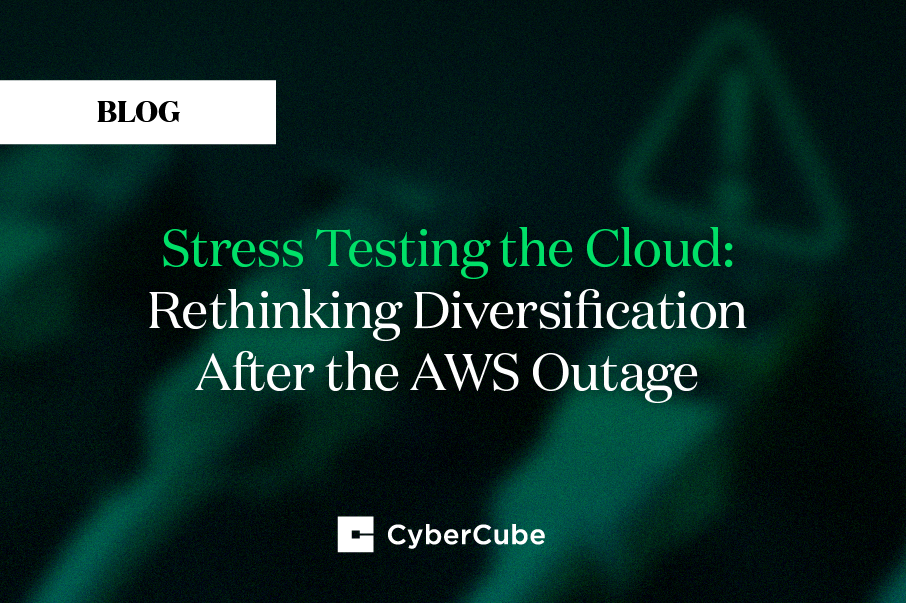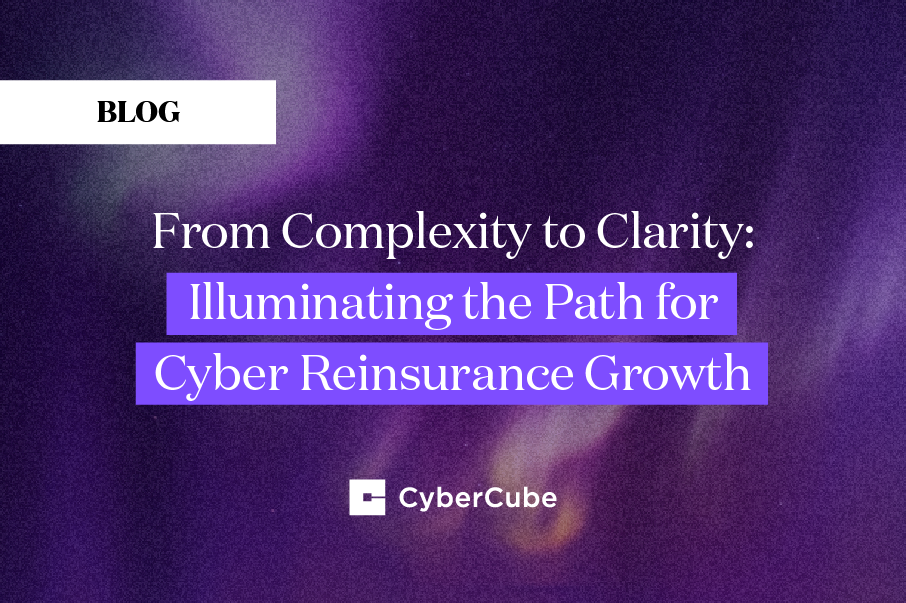Confessions of a Cyber Underwriter: How a portfolio-level perspective transformed my cyber underwriting approach
For years, I underwrote cyber risks the old-fashioned way.
A handful of data points.
A few vendor scores.
Some instinct.
And a healthy dose of hoping for the best.
I’d review each submission in isolation, like a self-contained puzzle. Was this account a good risk? Did the client patch regularly? Was their MFA in place? That was about as far as I could go before I had to give a thumbs up or down. And when claims happened? We chalked it up to bad luck, not blind spots.
But I’ve come to realize I was underwriting without seeing the whole picture — without understanding how one risk decision affected the broader portfolio.
In many ways, underwriting cyber has felt like driving at night without headlights. You can make out the road with experience and gut instinct, but you're still vulnerable to what you can't see: hidden exposures, aggregation risks, and portfolio-level shocks.
The tool that changed everything
When I was brought into CyberCube and introduced to Account Manager, I anticipated another technical interface built for IT analysts. Instead, I discovered a platform that thinks like an underwriter and portfolio manager combined.
More than raw data, it gave me clarity and context. Suddenly, I wasn’t just seeing whether an individual risk was “good” or “bad,” but how it would impact the entire book of business. That shift fundamentally changed how I understand underwriting
The moment I discovered Marginal Risk
Until CyberCube, I had never heard of Marginal Risk. I was accustomed to evaluating accounts in isolation, without considering important factors unfamiliar to me, like their incremental impact on portfolio volatility, concentration, or capital efficiency.
Account Manager revealed how even “good” risks can introduce systemic issues — whether through exposure clustering, increased risk of Black Swan events (tail risk), or diminished diversification. One submission could quietly destabilize the entire book.
It was like turning on the lights for the first time.
Now, instead of just asking, “Is this a sound risk?”, I ask, “Is this risk additive or destabilizing to our portfolio right now?”
Rethinking Black Swan events: A new kind of control
Here’s a recent realization: As underwriters, we often consider Black Swan events as inherently uncontrollable — rare, catastrophic shocks we simply have to absorb. And in many ways, that’s true. Some 1-in-100 events are going to happen no matter what we do.
But Marginal Risk reframes that conversation. It gives underwriters a mechanism to influence the severity of these extreme events. We may not prevent the improbable, but we can reduce the impact when it occurs.
That idea clicked for me in a profound way. It turns risk from something we endure into something we can shape. That’s a game-changer.
Underwriting with portfolio alignment
When I was in full-time underwriting, my interactions with my portfolio management team were minimal. They spoke in terms of capital deployment and accumulation zones; I focused on loss controls and security hygiene.
Now, I can see how Account Manager can align underwriting and portfolio management. CyberCube gives underwriters the ability to translate underwriting decisions into portfolio outcomes — speaking a shared language of Marginal Risk, diversification, and tail AEP (Aggregate Exceedance Probability) metrics.
It’s no longer a guessing game. Underwriters can screen submissions quickly, or go deep when needed, all with a clear view of downstream implications.
We’re not just underwriting policies but protecting the book.
Real-world impact: From risk selection to portfolio protection
Take, for example, a $1B retailer that looks healthy in isolation, but what if it shares critical vendors with half your existing book? What if its addition makes your book more vulnerable to a Black Swan event or undermines diversification goals?
With CyberCube’s end-to-end suite of solutions, including Account Manager (single-risk) and Portfolio Manager, I can:
- Detect overlaps in supply chain exposures
- Quantify the account’s marginal impact on portfolio loss distributions
- Identify and correct diversification gaps before they become liabilities
This elevates the underwriter’s role, from gatekeeper to strategic partner, and it earns credibility across the org — from the CUO to the CRO.
The validation I wish I had sooner
What makes Account Manager stand apart is that it’s not shelfware or vaporware. It delivers analytics grounded in real cyber insurance claims and validated by independent studies. It’s evidence-based underwriting.
Had I used this tool years ago, I believe my companies could’ve avoided some of our most painful losses, or at the very least, made better-informed tradeoffs.
Final word to my fellow underwriters
If you're still making decisions with incomplete data, isolated tools, or outdated heuristics, you’re leaving too much to chance.
Cyber underwriting has evolved, and it’s time we evolve with it.
With tools like Account Manager and metrics like Marginal Risk, we can move from guesswork to precision. From account selection to portfolio stewardship. From reactive underwriting to strategic leadership.
It’s not just about writing good risks anymore. It’s about building resilient portfolios, and knowing exactly how every account helps or hurts.
And in today’s threat landscape, that kind of clarity isn’t a luxury — it’s a necessity.
.png)



